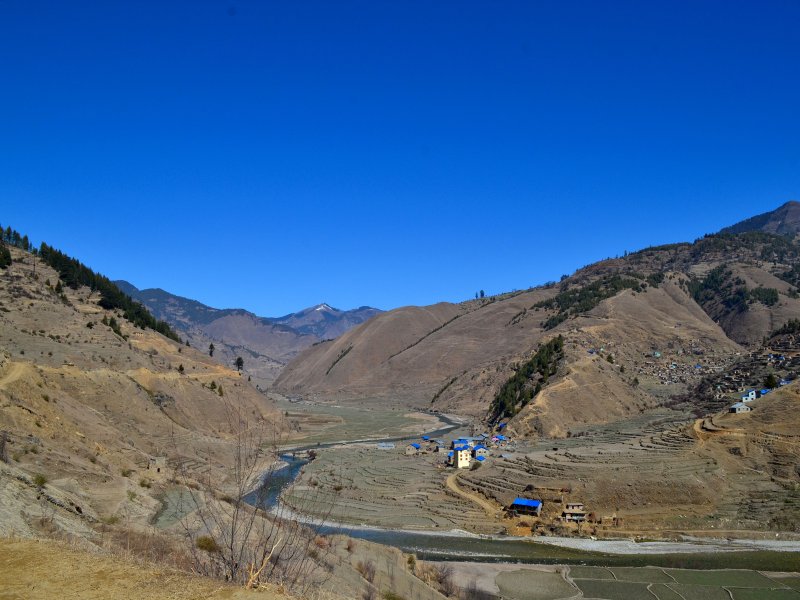Sinja, Nestled in the remote regions of the Karnali Zone in western Nepal, Sinja Valley stands as a testament to the rich historical and cultural heritage of the country. This picturesque valley, situated in the Jumla District, offers a unique blend of natural beauty and historical significance, making it an emerging destination for both history enthusiasts and nature lovers.
Sinja Valley is renowned for its historical importance as the ancient capital of the Khasa Kingdom, which dates back to the 12th to 14th centuries. The valley is home to the ruins of old palaces, temples, and inscriptions, shedding light on the glorious past of the Khasa civilization. The inscriptions in the Sinja Valley are among the earliest examples of the Nepali language written in Devanagari script, marking a significant milestone in the linguistic history of Nepal.
For tourists, Sinja Valley offers more than just a journey through time. The valley’s untouched natural landscape, characterized by rolling hills, lush forests, and the serene flow of the Hima River, provides a tranquil escape from the hustle and bustle of city life. Adventurous travelers can explore the numerous trekking routes that weave through the valley, offering breathtaking views and a chance to connect with the local culture. The hospitable local communities, primarily comprising the Thakuri and Chhetri ethnic groups, welcome visitors with warmth and share their rich traditions and lifestyles.
As efforts to promote Sinja Valley as a tourist destination gain momentum, the region is gradually developing infrastructure to accommodate an increasing number of visitors. With its profound historical roots and enchanting natural beauty, Sinja Valley is poised to become a must-visit destination for those seeking to explore the lesser-known treasures of Nepal. Whether you’re a history buff, a nature enthusiast, or simply in search of a serene retreat, Sinja Valley promises an unforgettable experience.






